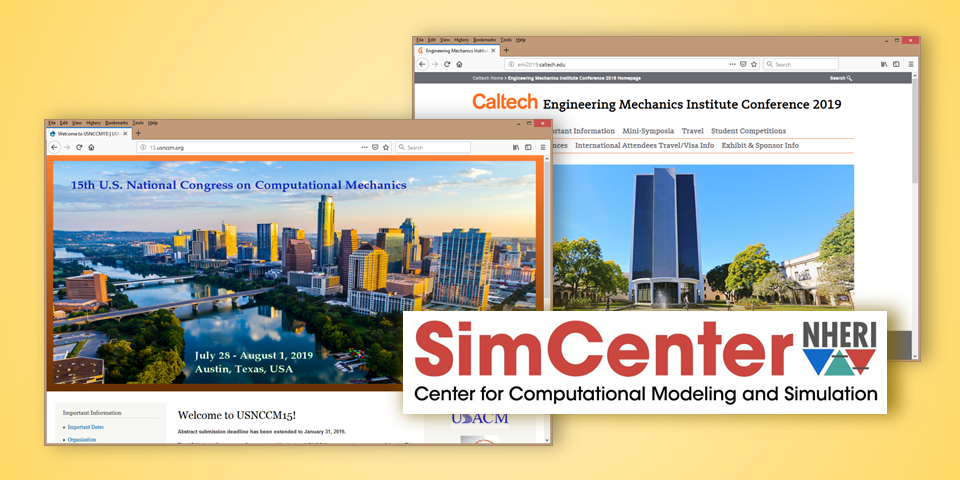SimCenter at Two Upcoming Conferences Plan to Attend!
Published on February 18, 2019

The NHERI SimCenter will participate in two conferences this summer. Plan to attend one of these meetings and hear how the SimCenters computational framework is being applied. Click on the event links below for registration information.
-
Engineering Mechanics Institute Conference
June 18-21, 2019, Caltech, Pasadena, California
Mini-symposium 92: Advances in Computational methods for rapid uncertainty quantification and robust/performance-based design of civil structures/systems exposed to natural and man-made hazards
-
U.S. Association for Computational Mechanics (USACM) 15th U.S. National Congress on Computational Mechanics (USNCCM 15)
July 29 August 1, 2019, Austin, Texas.
Session 206: From Precursors to Hazard Risks: Using Mechanics, Computing and UQ to Mitigate and Manage Catastrophic Events
The SimCenter will present A Computational Framework for Regional Earthquake Loss Estimation, authored by the NHERI SimCenter team of Wael Elhaddad, Frank McKenna, Michael Gardner, Adam Zsarnoczay, Matthew Schoettler, Chaofeng Wang, Sanjay Govindjee and Gregory Deierlein.
Abstract:
A major challenge in natural hazards engineering is the determination of the effects of a given natural event on an entire region. Regional impact estimates of this type are central to effective planning efforts by city and regional planners. For maximum utility, these estimates need to be conducted at as fine a scale as is practically possible. In this presentation we describe a computational framework that was developed at the NSF NHERI SimCenter to study the effects of natural hazards on communities at a regional scale. The modular and extensible framework allows researchers to simulate the response of structures using multiple fidelity models and perform damage and loss estimation for all structures in a region of interest. These large-scale simulations provide aggregated and granular damage and loss estimates for the region taking into account both the uncertainty in the structural material properties and the loading on the structures due to the natural hazard.
Two testbed simulations demonstrate the capability of the framework: one for the San Francisco Bay Area subjected to a synthetic magnitude 7.0 earthquake and another for the magnitude 7.0 earthquake in Anchorage, Alaska that occurred on November 30, 2018. These simulations demonstrate the workflow which couples the finite element modeling software OpenSees with the uncertainty quantification software DAKOTA. The extensibility of the framework is demonstrated by characterizing the earthquake hazards using different models, viz. seismic hazard analysis and stochastic earthquake loading models. Results from both regional studies are compared to damage and loss estimates obtained using HAZUS.





